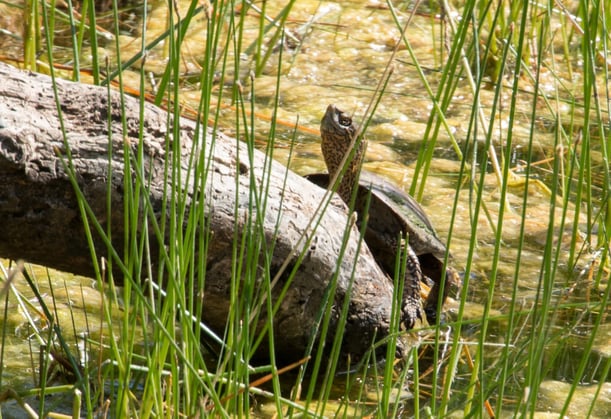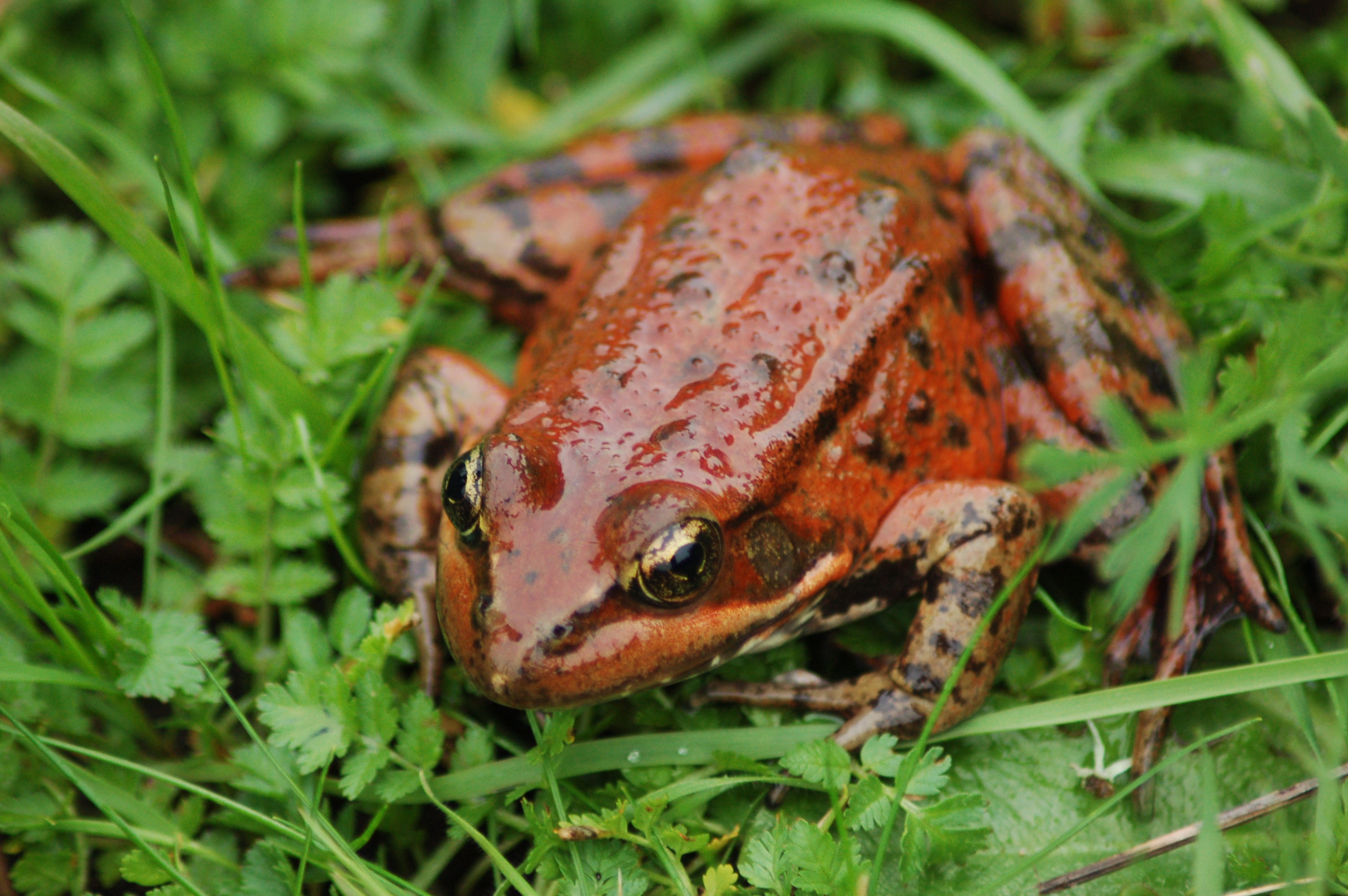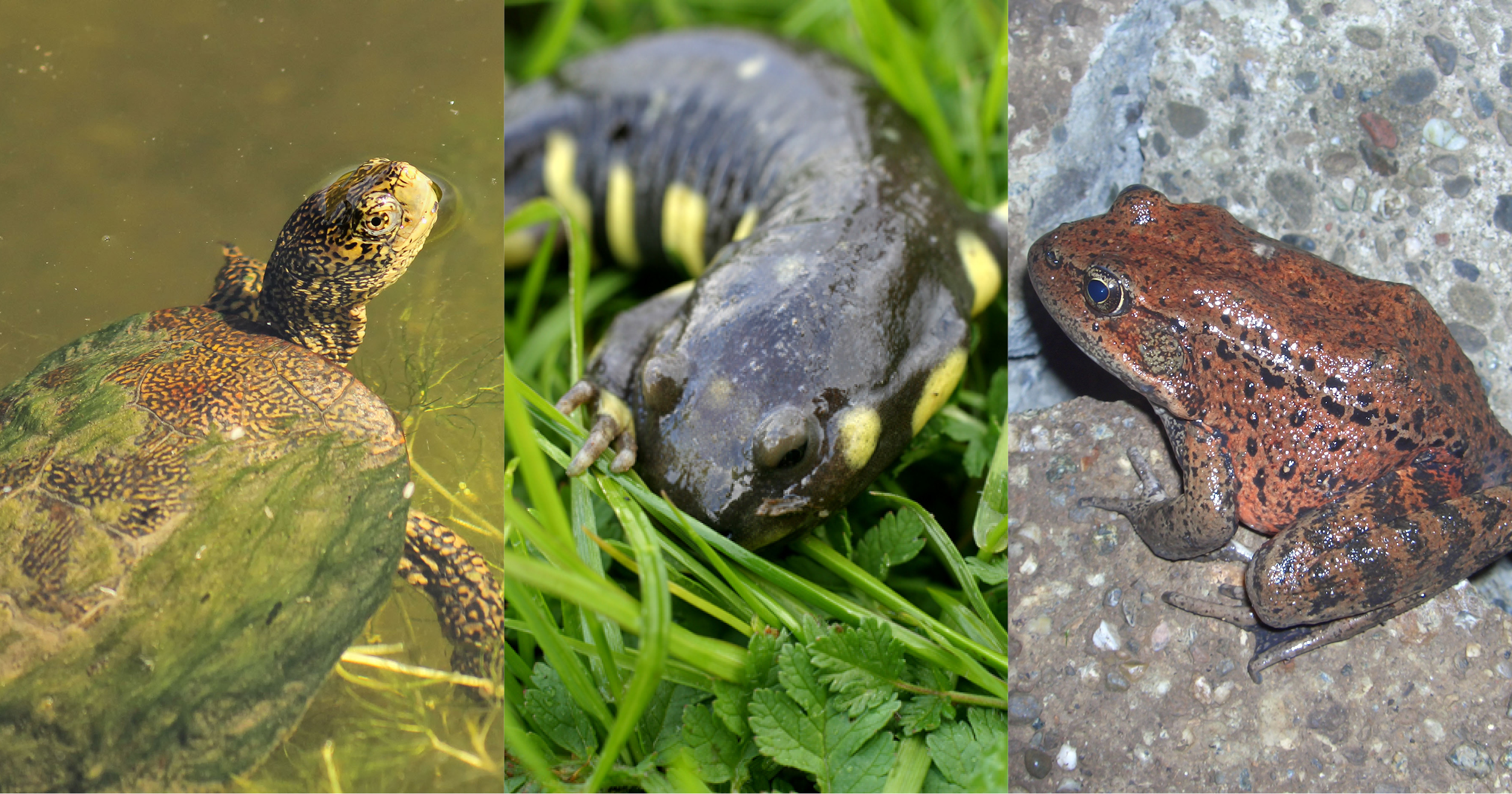To guide our efforts in restoring and conserving open space, the Open Space Authority regularly supports research to help understand local wildlife and how they live in and move across landscapes. There have been extensive efforts to understand mammal movement in one of the Authority’s priority conservation areas, Coyote Valley, but less attention has been paid to how other critical threatened species use and move through this landscape. Until now...
The Authority just released the results of the Coyote Valley Reptile and Amphibian Linkage Study, a nine-month examination of three native but threatened amphibians and reptile species: the California red-legged frog, California tiger salamander, and Western Pond Turtle. All three species rely on aquatic habitats like creeks, streams, and wetlands for all or part of their life, environments that have been increasingly lost or fragmented by development and competition from invasive species.
In this study, researchers identified opportunities to improve habitat and dispersal, making it easier for these species to move across the region. While you may not think these small animals would move very far during their lifetime, California red-legged frogs have been known to disperse up to 2 miles from their breeding location and California tiger salamanders up to 1.3 miles. If these animals are able to find mates from other breeding groups within that range, they can improve their genetic diversity which is needed for the long-term health of their populations.
.jpeg?width=824&name=John%20Cleckler%20CTW%20(USFW).jpeg)
Researchers looked at the existing habitat of these three species, identifying areas that provide suitable habitat, where they’ve been spotted before, and potential breeding sites. They then mapped the most likely pathways the three focal species would take to move across the Valley. Streams, canals, ponds, and drainage ditches were important habitat and movement corridors for all species. One exception was Coyote Creek which is impassable during heavy winter flow for the smaller and lighter California tiger salamanders. However the tiger salamanders were able to pass more easily over land, so grasslands and light agricultural fields were more likely to be appropriate movement corridors for them than the other species. Like the mammals studied before, the other major impediments to movement across the region are the major roads and transportation corridors like Highway 101, Monterey Road, and the Union Pacific railroad tracks.

The report offered several recommendations local conservation partners can implement to improve the quality of habitat and movement pathways across the Valley. The report recommended focusing efforts on the northern part of Coyote Valley, primarily north of Laguna Avenue, but also from Laguna Avenue south to Palm Avenue/Kalana Avenue. These areas have less existing development, better hydrology, and fewer major barriers to movement than the middle and southern portions of Coyote Valley.
Several recommendations were given in the report:
- Building new ponds that would provide stepping stones for movement of individuals and genetic exchange
- Creation of upland grassland habitat for California tiger salamanders
- Reducing or eradicating the populations of invasive animals like bullfrogs and nonnative predatory fish in Coyote Creek
- Building new linkages (under- or over-crossings) through Monterey Road and other major barriers
- Re-aligning Fisher Creek with a more natural meander to allow better use by California red-legged frogs and western pond turtles
- Establishing a monitoring program to determine how different initiatives affect habitat and connectivity.
The results from this study will be used by the Authority and partners to plan and restore habitat for these three rare species in Coyote Valley.

“Protecting the viability of rare, threatened, and endangered species such as the three identified by this study is a high priority for the Authority,” said Galli Basson, Resource Management Specialist. “This study has shown that restoring native habitat in Coyote Valley can help to expand the range of these and other native species.”
This study also supports the agency’s recent historic acquisition of 937 acres in Northern Coyote Valley, as this specific landscape emerged as key for mammals as well as the reptile and amphibian species identified there.
The Authority is grateful for partner, Peninsula Open Space Trust (POST), and funder, California Department of Fish and Wildlife’s Natural Community Conservation Planning Local Assistance Grant program. The Authority is also thankful for the detailed work of research firm, H. T. Harvey & Associates, and lead researcher on this project, Jeff Wilkinson, Ph.D.

